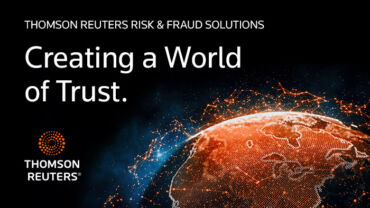It's imperative that corporations and law firms conduct a materiality assessment for their ESG activities, and here are 5 steps they can take to get started
Executing a materiality assessment for environmental, social & governance (ESG) activities is simple in concept, but one that can get murky very quickly.
There are two types of assessments — financial, and one that analyzes broader issues. The financial assessment looks exclusively at the ESG risks that could impact the organization’s financial value. The broader look, often called a “double materiality” assessment, examines ESG issues from both a financial impact and how the company’s activities could also influence the environment and society at large.
For law firms, the steps for creating an ESG strategy are the same, with just a few minor differences in the stakeholders, such as partners, professional staff, associates, clients, critical suppliers, and communities in which the firm has a major presence.
Here are five critical steps to create an ESG materiality assessment:
1. First, create a steering committee
The first step in determining material ESG issues is to put a cross-functional team of executives together to be accountable for the delivery of the ESG strategy’s creation and execution. Many times, organizations hire a person to lead this effort or appoint an existing internal leader.
For example, the United Kingdom-based law firm Burges Salmon hired Kirsty Green-Mann as its head of Corporate Responsibility. Under her leadership, the firm gathered perspectives from internal subject matter experts, which typically include heads of HR, community and pro bono, facilities, environmental management, diversity and inclusion, risk management, influential partners, and at least one member of the C-suite.
2. Identify specific stakeholders
Firms then need to identify stakeholders in order to determine their perspective on the most critical issues, practices, and policies. These insights may emerge as part of broader ESG-related concerns, along with opportunities for strategic planning and reporting exercises. For law firms, these stakeholders typically include partners, associates, members of the business and professional staff, clients, critical suppliers, as well as engagement with local communities.
3. Compile a list of material issues
Then working with these stakeholders, firms should conduct a “horizon-scanning” investigation to pinpoint a list of material issues. And at this point, it is a good idea to conduct a benchmarking exercise with peers and consult a global or cross-issue framework, such as the Global Reporting Initiative’s modular approach to standards or the Sustainability Accounting Standards Board’s materiality finder and map.
“I did a benchmarking exercise to look at the legal sector and how key clients were approaching ESG and what issues they had within their responsible business agendas,” Green-Mann explains.
There is no magic number of issues, of course, but maintaining a balance between a number that is manageable and comprehensive is key, given the size of the firm, the number of employees dedicated to its ESG efforts, and other business priorities.
4. Meet with individual stakeholders
To consult with stakeholders, a combination of surveys, sessions with interest groups, and one-on-interviews are part of a comprehensive approach to gaining feedback. For example:
-
-
- Burgess Salmon leveraged interest groups of employees to stay abreast of the issues that employees cared about and then enlisted their help in executing their firm’s sustainability strategy.
- Another law firm, Chapman and Cutler, compiled a group of intergenerational partners and employees to participate in its steering committee.
-
A best practice during the stakeholder engagement portion of the materiality assessment is to see how the firm’s larger purpose might be integrated into its sustainability. Weaving together a firm’s purpose and sustainability strategy help many organizations effectively communicate to internal and external stakeholders.
5. Analyze material issues & create strategy
The final step in doing a thorough materiality assessment is to analyze the results gathered from the multifaceted approach in consulting with stakeholders and then create a plan to execute. The insights from the previous steps help to build an organization’s sustainability strategy and shape it for the future. And a key part of that strategy’s execution is ongoing communication with stakeholders about the strategy itself and its progress.
Some law firms may find it helpful to align their strategy with a larger framework, such as the those from the World Economic Forum or the United Nation’s Sustainability Goals, in order to help stakeholders digest progress more easily. Both Chapman and Cutler and Burges Salmon, for example, chose to align their strategies to the U.N.’s framework.
As a law firm’s business changes and grows, its sustainability strategy and perspectives of its stakeholders are likely to evolve as well. For this reason, firms should revisit their materiality assessments regularly. Indeed, it is an iterative process.
In addition to the time and effort that goes into doing the assessment, effectively communicating strategy and progress against key priorities also must remain a top priority. Many law firms use multiple channels to communicate updates, including publishing an annual ESG or social impact report, incorporating important elements into regular communications to employees, highlighting updates in executive management keynotes and townhalls, and promoting audio and video interviews of executive committee members or partners on social media.
As part of that, identifying current and potential employee concerns with the firm’s transparency around certain public issues is increasingly important from a branding context. More than likely, mistakes and lessons will occur, but the most critical element of transparency is acknowledging a mistake, outlining what is learned, and committing to doing better.







